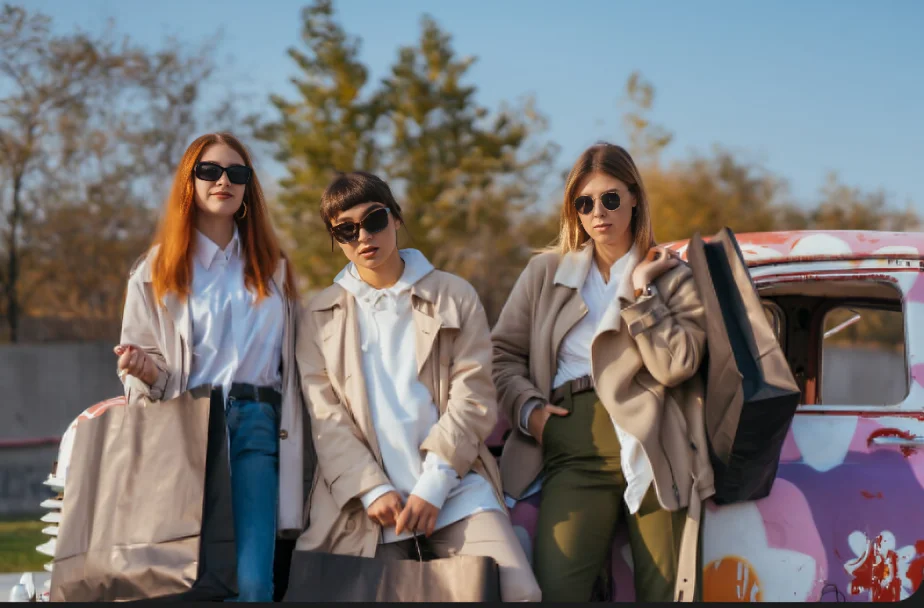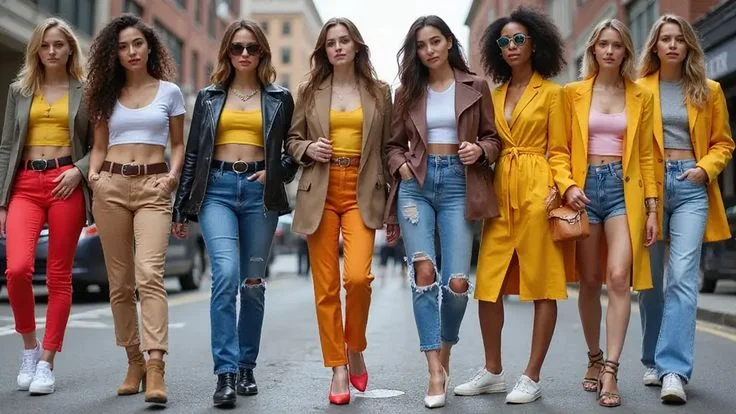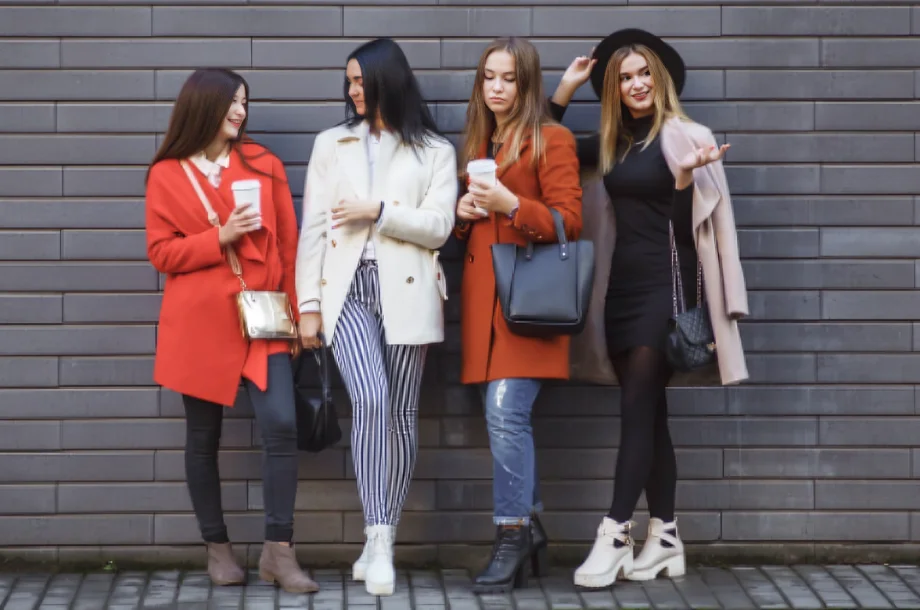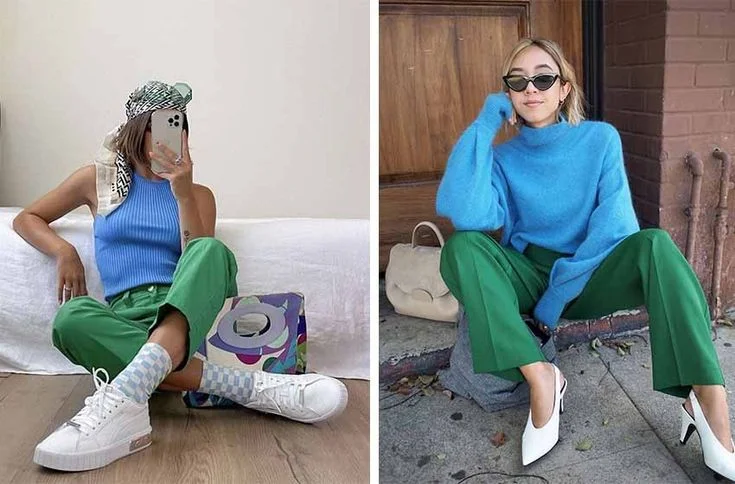The world of fashion never stands still. In fact, the trends in fashion clothing 2025 are already redefining how we dress, shop, and express ourselves. This year is set to be one of the most innovative yet, with a clear focus on sustainability, technology, and individuality.
By exploring these upcoming changes, you’ll be better prepared to align your style with the future of fashion. This foresight allows you to anticipate shifts before they go mainstream, giving you a head start on curating a modern wardrobe. Additionally, understanding these trends now can save you time and money when planning future purchases.
Why Fashion Trends Matter More Than Ever

Fashion has always been a mirror of society, and 2025 is no exception. As global awareness of environmental and social issues grows, the industry is embracing change. This shift means that trends are not just about aesthetics they’re about values and experiences.
Consequently, knowing what’s ahead helps both consumers and brands make smarter choices. It empowers shoppers to align with labels that reflect their beliefs, while brands gain insights into consumer demand. Moreover, these shifts create a ripple effect, influencing marketing strategies, product launches, and even employment in creative sectors.
Moreover, trends in fashion clothing 2025 go beyond runways. They are shaping retail experiences, digital platforms, and even the ways we interact with clothing itself.
This year, innovation and ethics will coexist, creating a more inclusive and personalized fashion landscape. As technology evolves, shoppers expect seamless online-offline integration, leading to better engagement. In turn, designers are experimenting with interactive garments, merging fashion and function like never before.
Top Trends in Fashion Clothing 2025
1. Sustainability at the Core
Transitioning into 2025, sustainability is no longer optional it’s a baseline expectation. Brands are investing in circular fashion systems, using recycled fabrics, and introducing rental or resale options.
This move not only reduces waste but also empowers customers to make eco-friendly choices without sacrificing style.
Beyond materials, companies are exploring waterless dyeing methods and renewable energy-powered factories. Consumers increasingly demand transparency about carbon footprints, pushing brands to publish sustainability reports.
As a result, eco-conscious design has become a key selling point rather than a niche feature. Furthermore, the push for transparency is stronger than ever. Shoppers can now trace the origins of their garments, thanks to blockchain and digital labels.
This new standard ensures trust and helps brands build loyal communities. It also encourages accountability across supply chains, benefiting garment workers and local economies. In this way, sustainability in 2025 extends beyond the product to embrace ethics and fairness.
2. Digital Fashion and the Metaverse
Another major shift is the rise of digital fashion. With the metaverse becoming mainstream, virtual clothing and avatars are transforming how we think about self-expression. Fashion houses are designing digital-only collections for online worlds, giving people limitless creative possibilities.
This change lowers barriers for smaller designers, who can debut collections online without traditional production costs. It also allows consumers to experiment with bold looks risk-free, sparking creativity. By bridging gaming and fashion, these experiences tap into younger audiences who live much of their lives online.
Additionally, augmented reality (AR) fitting rooms are streamlining the online shopping experience. Customers can virtually “try on” outfits, reducing returns and improving satisfaction.
This blend of physical and digital realms is a hallmark of the trends in fashion clothing 2025. Over time, these tools will become more accurate and intuitive, making shopping faster and more enjoyable. Retailers adopting these innovations early will gain a competitive advantage in customer loyalty.
3. AI-Driven Personalization

Artificial Intelligence is revolutionizing how consumers discover and buy fashion. Algorithms analyze preferences, body types, and style histories to recommend personalized outfits. This level of customization saves time and enhances the shopping experience.
It also makes discovering new brands effortless, as AI suggests labels aligned with your taste. For retailers, data-driven insights improve marketing campaigns and increase conversion rates. Consequently, fashion becomes not just a purchase but a curated journey tailored to each shopper.
At the same time, brands benefit from better inventory management, reducing overproduction. The outcome is a win-win situation for the environment and the economy.
By producing only what’s needed, companies cut costs and minimize waste. In 2025, AI will also help designers predict future trends, shortening development cycles and boosting innovation.
4. Gender-Fluid and Inclusive Design
In 2025, boundaries between menswear and womenswear are fading. Gender-fluid collections are becoming mainstream, reflecting a broader cultural acceptance of individuality. Designers are embracing inclusive sizing, ensuring that everyone can find clothing that celebrates their identity.
This inclusivity extends to marketing campaigns, where diverse models represent a wider spectrum of consumers. By normalizing representation, brands strengthen customer trust and loyalty. Additionally, collaborations with activists and advocacy groups are driving meaningful change within the industry.
Transitioning from a binary approach to a spectrum of expression, these inclusive trends signify a major step forward in the industry. Shoppers no longer feel limited by traditional categories, opening up endless possibilities for self-expression. As a result, stores and websites are rethinking how they organize products, making shopping more intuitive and welcoming for all.
5. Bold Colors and Textures Inspired by Nature
Despite the rise of minimalism in previous years, 2025 is all about vibrant colors and tactile fabrics. Think earthy tones inspired by landscapes, combined with unexpected textures like plant-based leathers or bio-fabricated silks. This nature-driven palette connects wearers to the environment while making a bold style statement.
Designers are looking to biophilic principles, incorporating patterns and hues that evoke calm and positivity. These choices resonate emotionally with consumers, creating deeper brand connections. Additionally, such palettes photograph beautifully for social media, making them highly shareable.
This shift also reflects advancements in material science. Innovations allow designers to experiment with lightweight yet durable eco-materials. Consequently, customers get the best of both worlds cutting-edge style and sustainability. By blending tradition and innovation, bold natural aesthetics redefine what luxury means in 2025.
How These Trends Affect Consumers

Understanding the trends in fashion clothing 2025 helps shoppers make informed decisions. For example, you can prioritize brands with transparent supply chains or experiment with digital clothing before investing in physical pieces. Transitioning into these habits now will make your wardrobe future-ready and sustainable.
It also helps you develop a signature style that stays relevant longer, reducing impulse buys. Over time, this approach can save you money and support ethical brands. Moreover, by adopting these habits, you become part of a movement shaping the future of fashion.
Furthermore, these trends influence price points and availability. As eco-friendly materials and AI-driven tools scale, they become more accessible to everyday consumers.
Staying informed ensures you’re not left behind as the industry evolves. In turn, your purchasing power supports innovation, making sustainable and inclusive options mainstream faster.
The Role of Technology in Fashion’s Future
Technology underpins nearly every trend shaping 2025. From AI to AR and blockchain, digital tools are making fashion smarter and more efficient. Transition words like “therefore” and “consequently” highlight the cause-and-effect relationship: as tech improves, fashion becomes more sustainable and personalized.
These innovations also streamline operations behind the scenes, from supply chain tracking to on-demand manufacturing. Consumers may not see these processes directly, but they benefit from faster delivery and fewer stockouts. As a result, shopping feels seamless and rewarding.
Additionally, social media platforms continue to amplify these changes. Influencers, micro-creators, and virtual models are redefining how trends spread, making style inspiration more democratic and diverse.
This democratization allows niche styles to gain traction quickly, giving consumers more options than ever. Consequently, trends move faster but also become more tailored to individual communities.
Tips for Adopting 2025 Fashion Trends

Start with Small Steps
Transition into sustainability by choosing a few eco-friendly pieces rather than overhauling your wardrobe overnight. This gradual approach makes change manageable and cost-effective. Begin with basics like recycled denim or organic cotton tees. Over time, you’ll notice the quality and longevity of these items outlast fast fashion.
Embrace Digital Experiences
Try virtual fitting rooms or digital fashion platforms to explore new styles without commitment. This not only reduces waste but also broadens your creative horizons. Experiment with bold looks virtually to build confidence before buying. Plus, these tools can suggest pairings you might never have considered.
Support Inclusive Brands
Look for labels that offer gender-neutral designs and inclusive sizing. By voting with your wallet, you encourage more brands to adopt these values. Follow their social channels to stay updated on new releases. You’ll also discover collaborations with diverse artists that bring fresh perspectives to fashion.
FAQs About Trends in Fashion Clothing 2025
What is the biggest trend in fashion clothing 2025?
Sustainability, powered by technology and transparency, is the biggest overarching trend. It influences everything from materials to retail experiences. As a result, consumers can expect more responsible choices without losing style or convenience.
How will AI change fashion in 2025?
AI will drive hyper-personalized shopping, helping consumers find the right styles faster and enabling brands to produce only what’s needed. This reduces waste and increases satisfaction, creating a smarter industry overall.
Are digital clothes really a thing?
Yes! Digital clothes are already being sold for use in virtual worlds and social media, and this market is set to explode in 2025. They’re a cost-effective way to explore creativity without adding to physical waste.
Can I participate in these trends on a budget?
Absolutely. Start by buying second-hand, renting special-occasion outfits, or trying free virtual styling tools before purchasing. These options let you engage with trends while saving money and reducing your footprint.
Conclusion
The trends in fashion clothing 2025 represent a bold step into the future. Sustainability, technology, and inclusivity are no longer buzzwords—they’re becoming the new normal. By understanding and embracing these shifts, you can align your wardrobe and mindset with the values shaping tomorrow’s style.
Consequently, the coming year isn’t just about looking good. It’s about making choices that feel good, too. As you adopt these trends, you’ll not only stay ahead of the curve but also contribute to a more responsible and innovative fashion industry. Your participation in these movements helps redefine fashion for generations to come.

